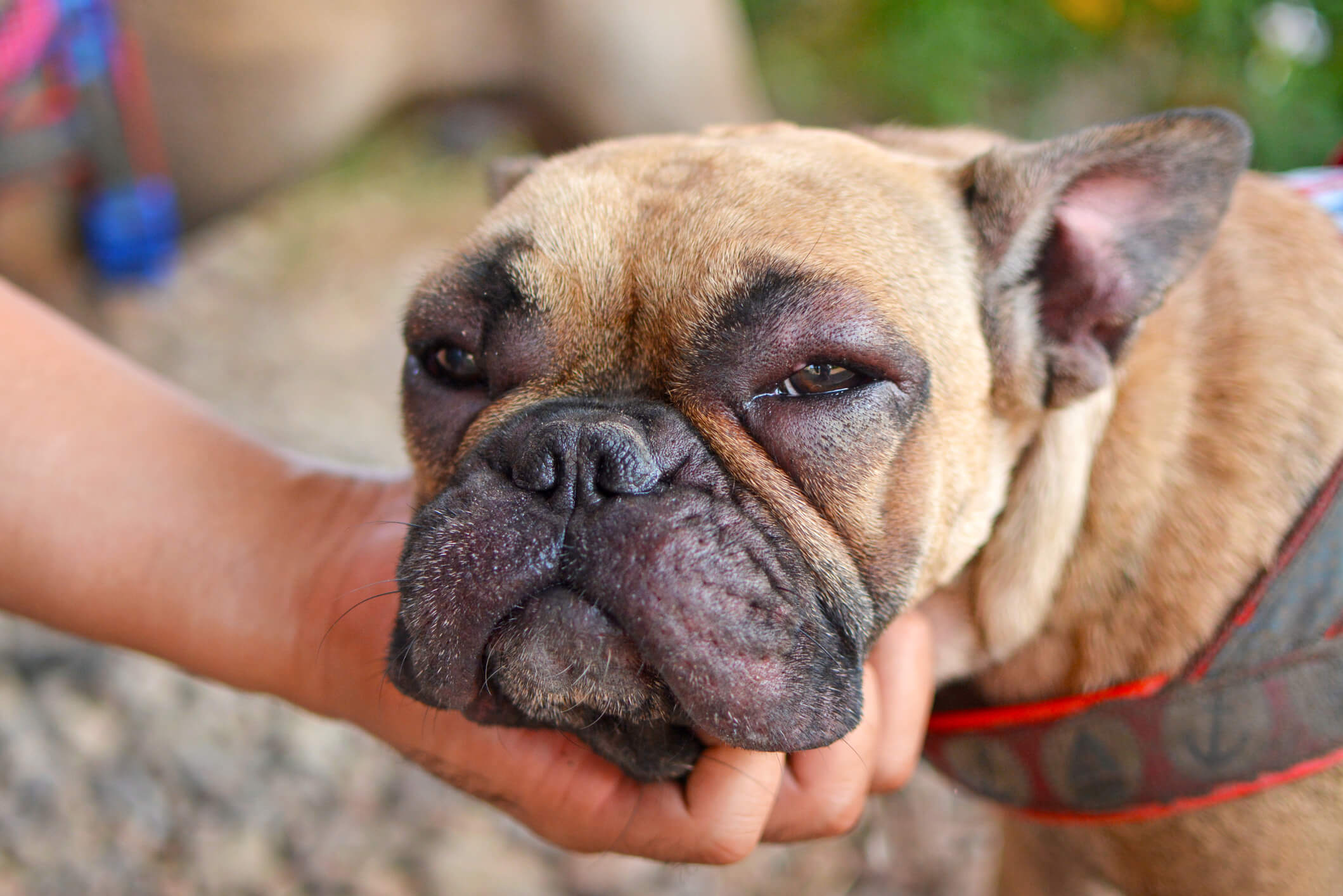
Can Dogs Go Into Anaphylactic Shock?
People who have severe allergies understand how dangerous allergic reactions can be. Some are prone to anaphylaxis—a potentially life-threatening reaction that requires immediate attention. This had led many pet owners to wonder, “If my dog can succumb to allergies, can they also experience anaphylactic shock?”
As it turns out, dogs can experience anaphylaxis as a response to specific allergens. Fortunately, anaphylactic shock is rare in our furry friends.
Even still, it’s important for pet owners to understand what anaphylactic shock looks like in dogs and what to do if it occurs. Fast action can mean the difference between life and death for dogs experiencing this extremely dangerous allergic reaction.
What is anaphylactic shock?
Anaphylaxis can occur when a dog is exposed to a specific allergen such as food, an insect sting or a medicinal injection. Instead of viewing this allergen as harmless, the dog’s body mistakenly identifies it as harmful and produces a significant excess of antibodies. Dogs who have developed this severe allergic reaction must have been exposed to the allergen before. It is during that first exposure that the body develops the allergy.
In the case of anaphylactic shock, these antibodies course through the dog’s entire body, resulting in widespread reactions. This reaction usually occurs just seconds or minutes after the dog’s exposure.
Anaphylactic shock is very different from other types of allergic responses you might see in dogs. It is an urgent emergency that needs to be treated immediately, or else your dog could lose their life. If you notice your dog displaying the signs of anaphylactic shock, rush them to the vet right away. There, they will likely need injections of epinephrine to counteract the allergic reaction and bring their body back to normal. Most dogs will need to be hospitalized and monitored for at least a day to ensure their ability to breathe and function normally again.
Clearly, this reaction stands in stark contrast to the mild allergic reactions that are more commonly seen in dogs. Localized bumps or hives, which cause swelling and itchiness; nasal allergies, which cause sneezing, watery eyes and nasal discharge; and mild gastrointestinal upset caused by food allergies typically go away on their own, and immediate veterinary attention is not needed.

What does anaphylaxis look like in dogs?
What most pet owners don’t realize about canine anaphylaxis is that, unlike humans and other animals, who typically experience trouble breathing because the immune response affects the lungs, dogs are more likely to suffer from gastrointestinal distress. This is because the allergic reaction affects the liver, causing localized inflammation and problems like diarrhea and vomiting. However, dogs can still experience difficulty breathing due to their reaction.
Other symptoms of anaphylactic shock include excessive drooling, seizures, pale gums, rapid heartbeat, weak pulse, cold limbs and coma. Many of these signs come from the shock—a reaction in which blood flows inadequately to your dog’s body parts, damaging the organs.
Preventing anaphylactic shock in dogs
There is no way to test or preemptively tell whether a dog will have a severe allergy to a particular allergen. Unfortunately, this means that reducing your dog’s risk for anaphylaxis is almost impossible until the allergy is discovered. It is believed that most anaphylactic reactions are hereditary, so if your pet’s parents experienced severe allergies, your pet might, too. But there’s no telling what, exactly, might cause the reaction.
Dog owners should closely monitor their pets after administering any new medications or after their pet receives any vaccines or injections, since these are some of the substances that commonly lead to severe reactions. Additionally, pet owners should be mindful of their dogs outside when insects are present and use pest repellent to avoid bites and stings.
Once an allergy has been uncovered, your dog should be kept away from the substance that causes an allergic reaction. This is true for both minor and severe allergies. Continued exposure to allergens that produce anaphylaxis is believed to worsen the reaction over time. This means that the second or third time your pet has an allergic reaction, it might be more severe than the last, and thus much more dangerous. And, while severe allergies are much more dangerous and difficult to treat, even minor allergies can make your dog’s life very uncomfortable and lead to additional problems after prolonged exposure.
Anaphylaxis is something that every pet owner should know how to identify and respond to, or else their pets might be at risk of a dangerous fate. Stay vigilant about your pet’s allergies and the severity of their allergic reactions to stop anaphylaxis in its tracks.


